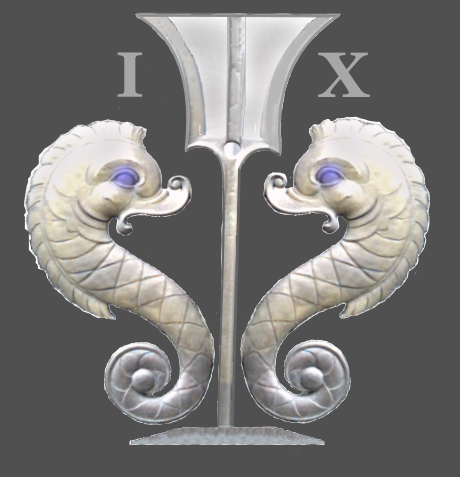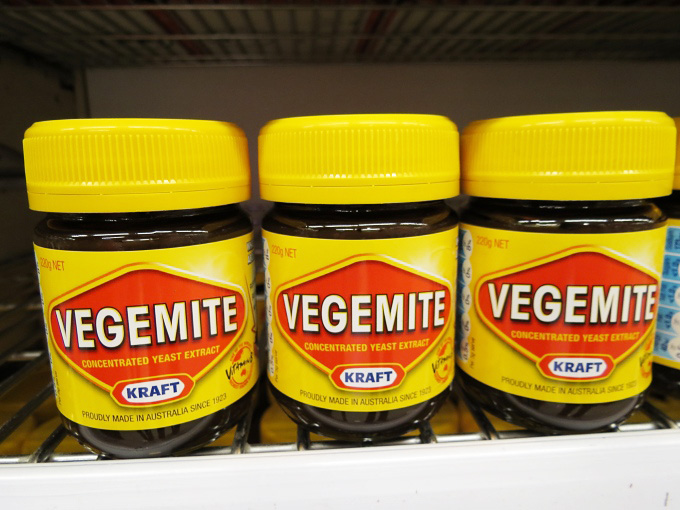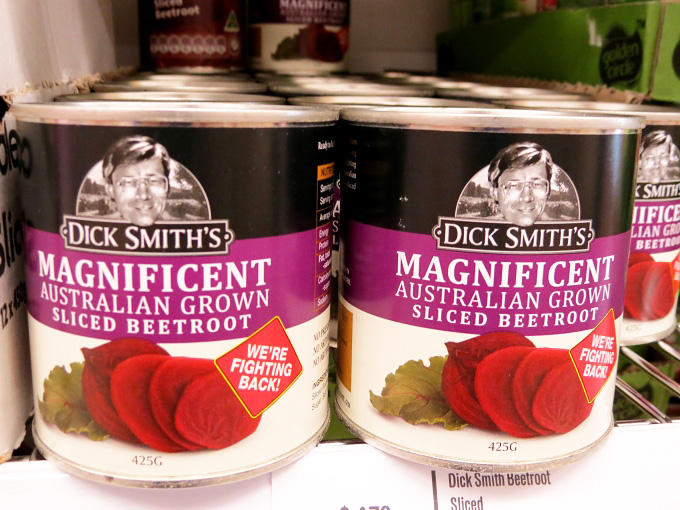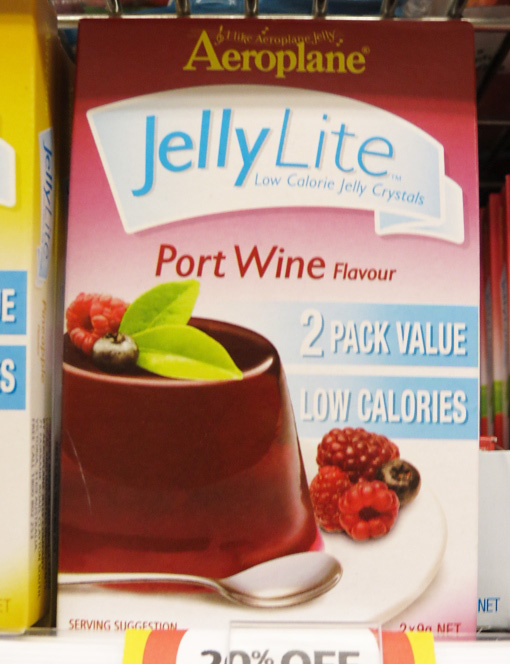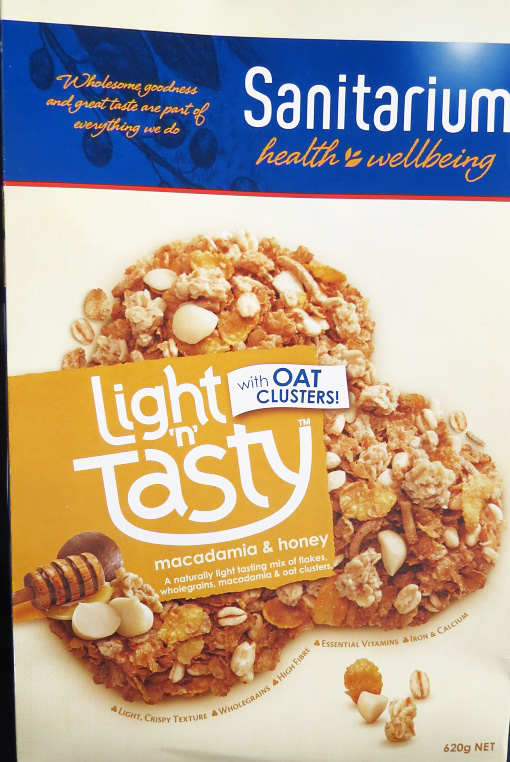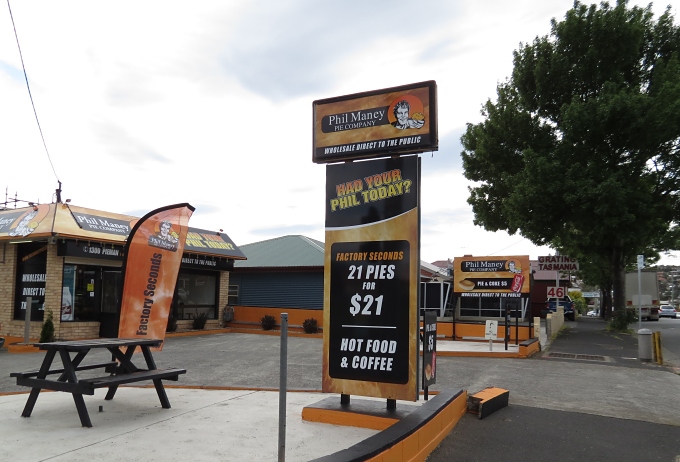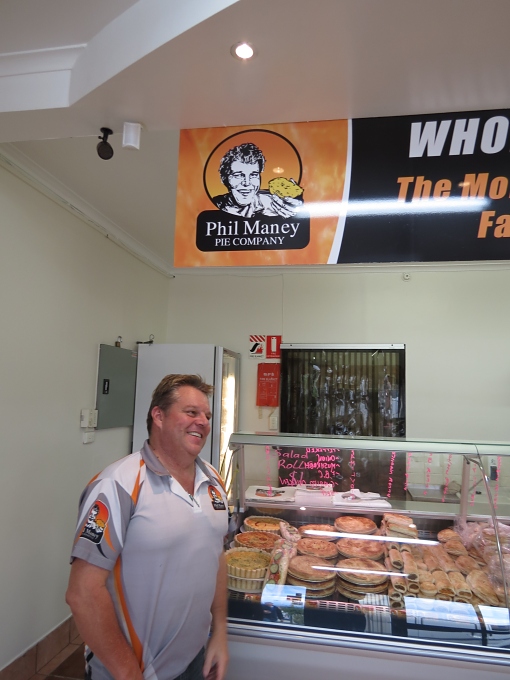America's greatest exports
/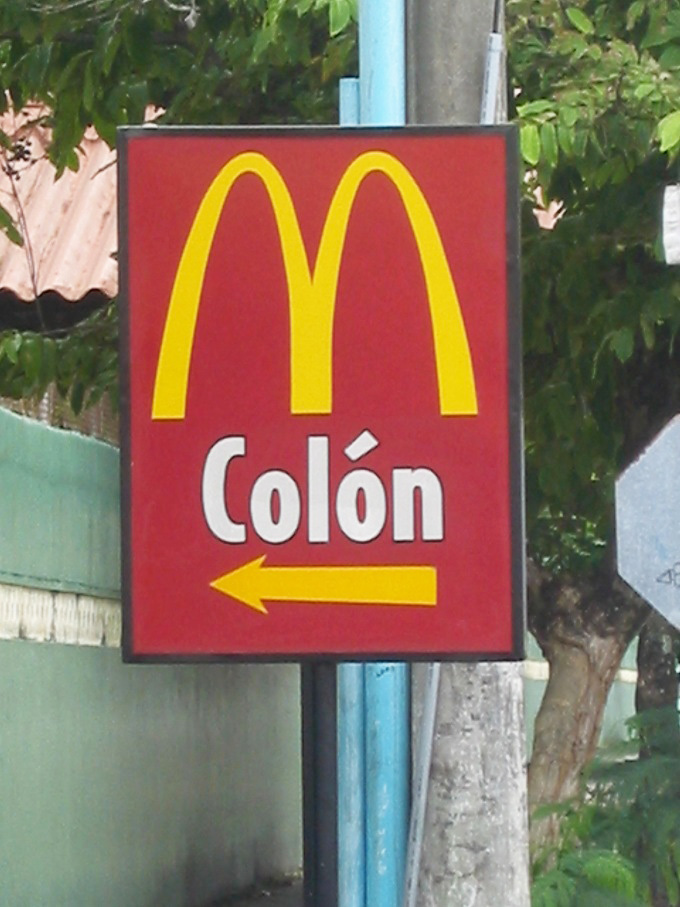 When it comes to America's greatest exports, we see them all the time … fast food chains. Oh, the rest of the world watches our TV shows and movies and listens to our music, but they gobble up the fast food just as quickly as we do in the States. In fact, some might argue, they're gobbling it up faster.
We admit it. We stopped at McDonald's frequently when we were traveling the US this past summer. Senior coffees were offered for half price and I could get an order of scrambled eggs for $1.49. David likes the Quarter-pounder (without cheese); I really like their fresh salads though Burger King's are better. No fries, no milkshakes (well, maybe sometimes!). We'd stop at Burger King and pick up my salad and then go to McDonald's for David's burger and the free wifi. We're equal-opportunity fast foodies.
When it comes to America's greatest exports, we see them all the time … fast food chains. Oh, the rest of the world watches our TV shows and movies and listens to our music, but they gobble up the fast food just as quickly as we do in the States. In fact, some might argue, they're gobbling it up faster.
We admit it. We stopped at McDonald's frequently when we were traveling the US this past summer. Senior coffees were offered for half price and I could get an order of scrambled eggs for $1.49. David likes the Quarter-pounder (without cheese); I really like their fresh salads though Burger King's are better. No fries, no milkshakes (well, maybe sometimes!). We'd stop at Burger King and pick up my salad and then go to McDonald's for David's burger and the free wifi. We're equal-opportunity fast foodies.
In South America, the predominant chain we saw was the Colonel's Kentucky Fried Chicken. Even in the most remote areas of Ecuador or Peru, the familiar white-bearded Southern gentleman stood out in a crowd. He was most noticeable in the food courts of larger malls, but you'd just as likely see him in smaller towns. The lines waiting for the Colonel were longer than anywhere else.
I remember seeing a Dunkin Donuts in downtown Salinas, Ecuador and it blew my mind. The donuts tasted nothing like an American donut (we tried one only for the experience), but the line was long and the donuts were selling like hotcakes at a premium price.
Hungry Jacks aka Burger King, Dominos and Pizza Hut all have a presence here in Australia. Hungry Jack's has the pitiful honor of having both the #1 and #2 worst nutritional meals on their menu. Subway is the largest food chain in Australia based on the number of stores they have, but McDonald's has nearly 20% of the fast food market share compared to Subway's 2%. Australia is the world's 11th largest fast food nation. They'll spend over $37 million on “take away food” in 2012. Like the US, Australia is fighting an obesity war.
 Mickey D's probably does the best job of marketing wherever we've been, capitalizing on the local foods and language to corral folks in and offer them what they want, fast. When we were in Quebec, Canada, McDonald's offered McHomard , a lobster salad sandwich in a hot dog bun. They offered the same thing as McLobster in Connecticut. In Uruguay and Argentina, they offered hot mate, the local drink of choice, on the beverage menu.
Mickey D's probably does the best job of marketing wherever we've been, capitalizing on the local foods and language to corral folks in and offer them what they want, fast. When we were in Quebec, Canada, McDonald's offered McHomard , a lobster salad sandwich in a hot dog bun. They offered the same thing as McLobster in Connecticut. In Uruguay and Argentina, they offered hot mate, the local drink of choice, on the beverage menu.
Australia is no different. Aussies love their beef and McDonalds calls the big Angus burger here, the McOz. They add sliced beetroot (beets) and fried egg to the usual McConcoction. And they're not cheap. Here in Oz, McDonalds will run two people about $15-$18 for a lunch combo. No bargain, but then eating out in Australia is an expensive venture...even for fast food. There's always the “pie” alternative...21 for $21 at Phil Maney's.
Adding McCafe to their offerings was a great move as is their newer “healthier” menu items. Certainly there's always a bunch of kids in the innovative play areas. Interestingly enough, the prices for coffee aren't that much cheaper than anywhere else, but it's convenient and they're everywhere and the coffee is reasonably good...and there's that free wifi thing.
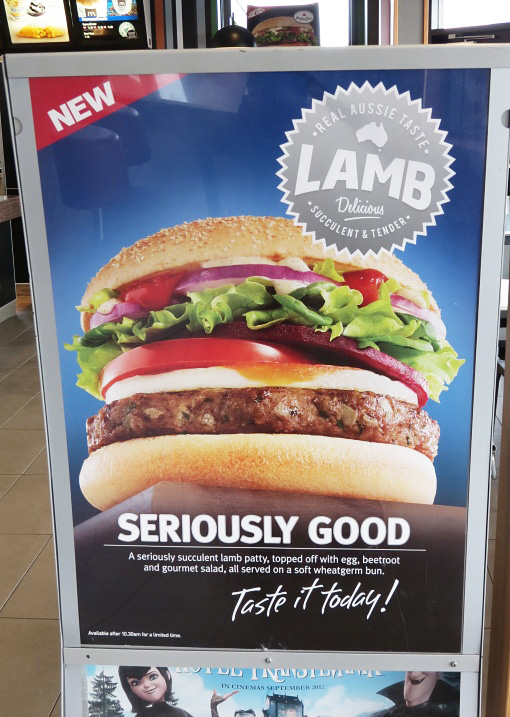 We stopped in at the McDonald's in Kingston the other morning for a flat white (half espresso/half steamed milk) and noticed they were offering a new 100% lamb burger. I think they're going to call it McLamburger … also with beetroot and egg. They saw no humor when I suggested calling it McBaaaa.
We stopped in at the McDonald's in Kingston the other morning for a flat white (half espresso/half steamed milk) and noticed they were offering a new 100% lamb burger. I think they're going to call it McLamburger … also with beetroot and egg. They saw no humor when I suggested calling it McBaaaa.
